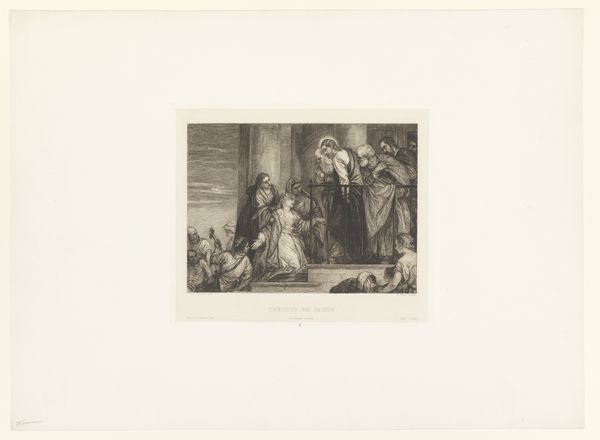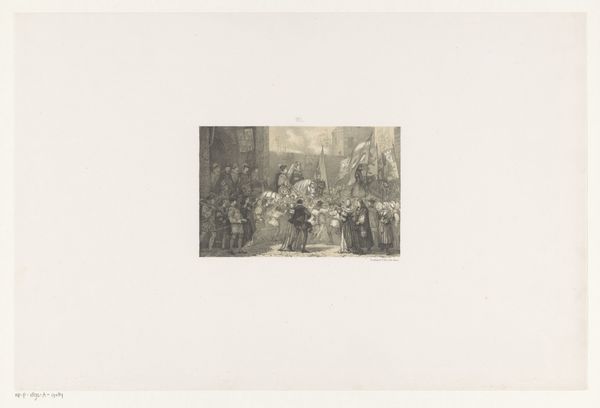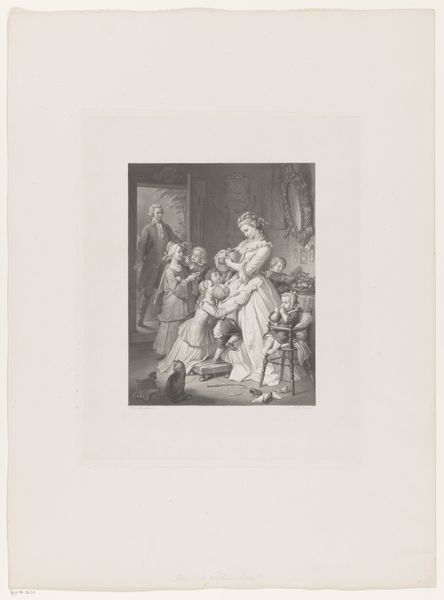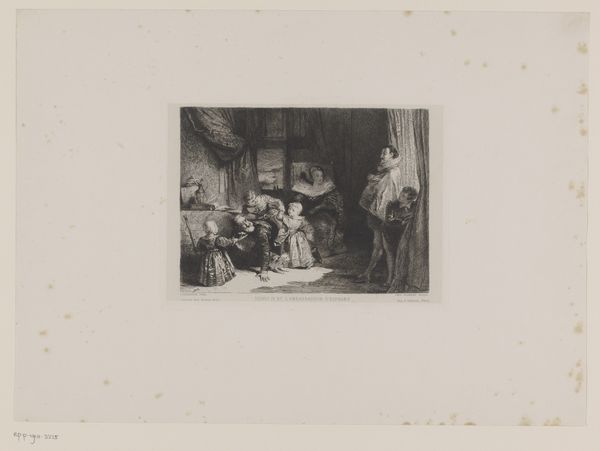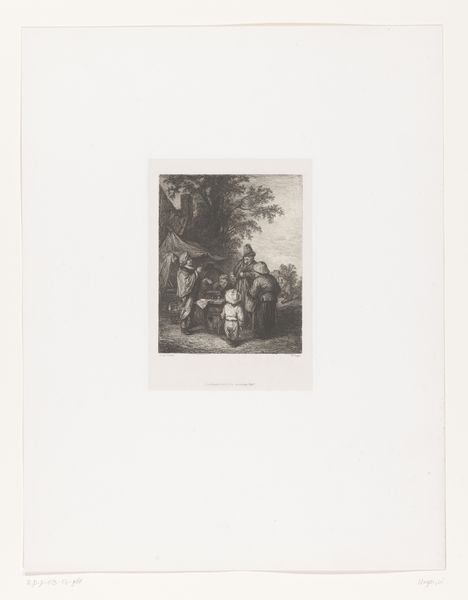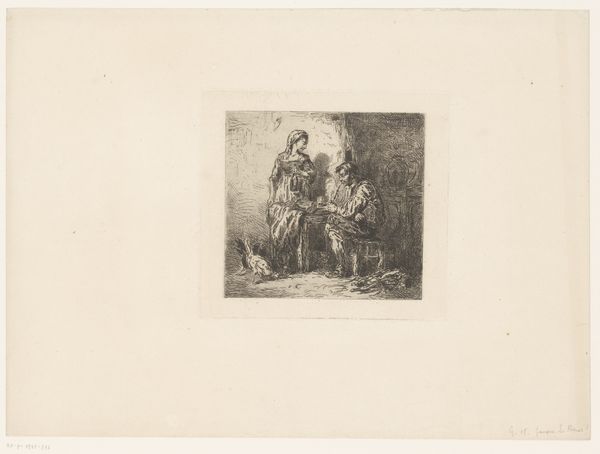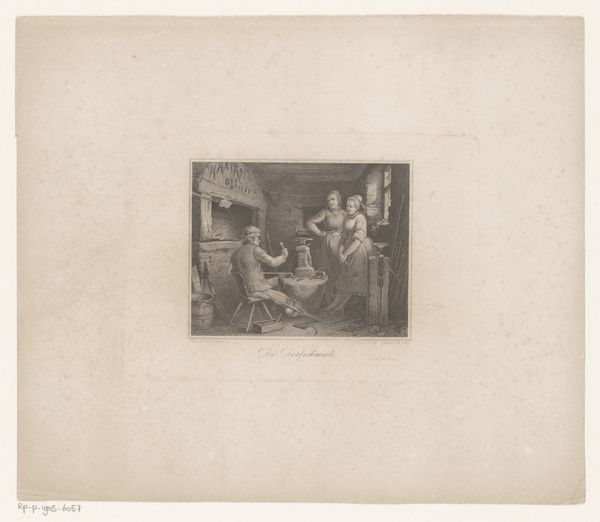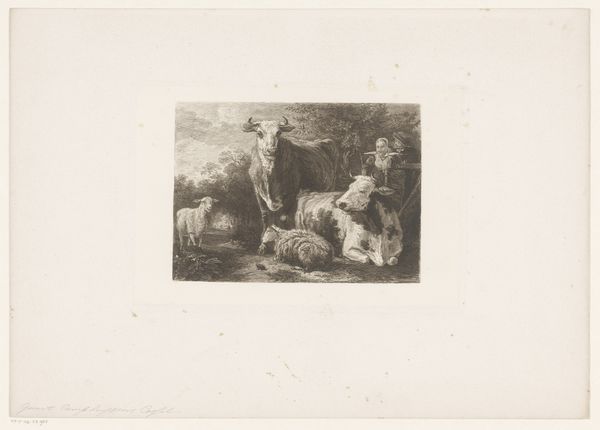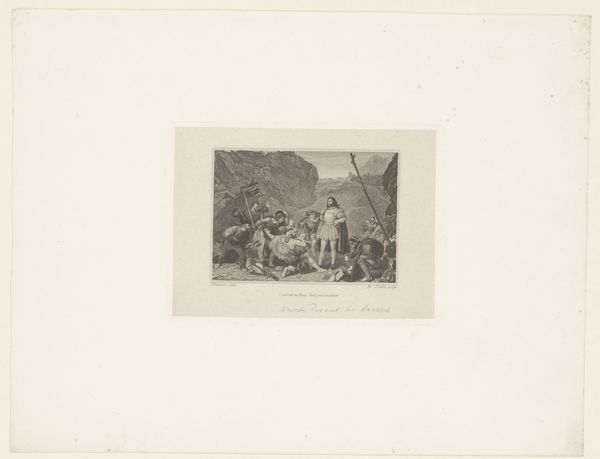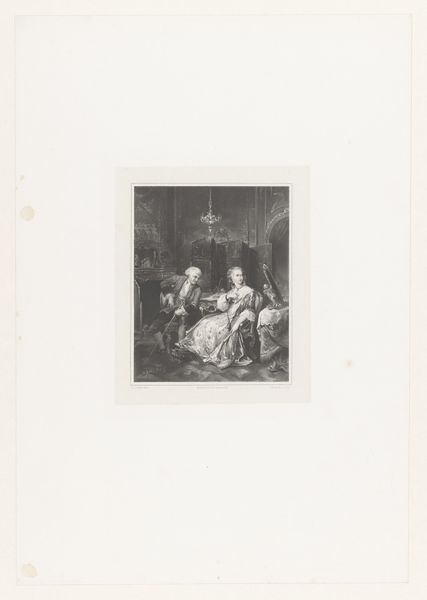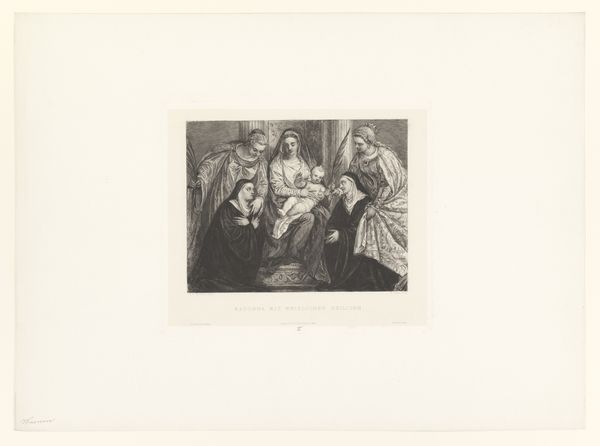
Dimensions: height 398 mm, width 511 mm
Copyright: Rijks Museum: Open Domain
Curator: It’s an interesting thing about prints, isn’t it? How a relatively small piece of paper can hold so much emotional weight. This engraving by Adolphe Mouilleron, dating from sometime between 1830 and 1880, certainly does. It’s titled "Torquato Tasso opgesloten in het gekkenhuis," or "Torquato Tasso Locked Up in the Madhouse". Editor: Oh, instantly, I feel a somber mood settling in. The confinement is palpable. The monochrome palette adds to this heavy, introspective feel. It's almost as if I'm looking into a captured memory, a dark page torn from someone’s troubled life. Curator: Exactly! Mouilleron really captures Tasso's state of mind. Note how the tight, constricting lines create a sense of entrapment within the asylum. The stark contrast enhances the drama, doesn't it? I see it as a visual representation of Tasso’s tormented psyche. Editor: The way the guards or jailers are posed—they seem almost theatrical, detached from Tasso's obvious suffering. Are they symbols of external pressures, societal constraints? Curator: I think so. Mouilleron emphasizes the divide between Tasso, lost in his inner world, and those who represent the so-called "rational" world. It suggests the painful isolation that genius can bring. The figure of Tasso almost fades into the stone of the building; almost camouflaged among the cold exterior walls that enclose the artist. Editor: Do you think it’s romanticizing madness, or does it genuinely convey empathy for Tasso’s struggle? The composition pulls me both ways. The details make you sympathize, while the image gives you distance. Curator: It’s a balancing act, for sure, typical of the Romantic era’s fascination with intense emotion. The work highlights both Tasso's vulnerability and the indifferent, perhaps even cruel, gaze of society towards mental illness at the time. Editor: It certainly provokes a potent mixture of discomfort and reflection. Curator: For me, that is the beauty and pain of this kind of piece. How well this artist captured this very emotional situation so perfectly. Editor: Well, this piece really gave me a new outlook and sparked my interest, that's for sure.
Comments
No comments
Be the first to comment and join the conversation on the ultimate creative platform.

